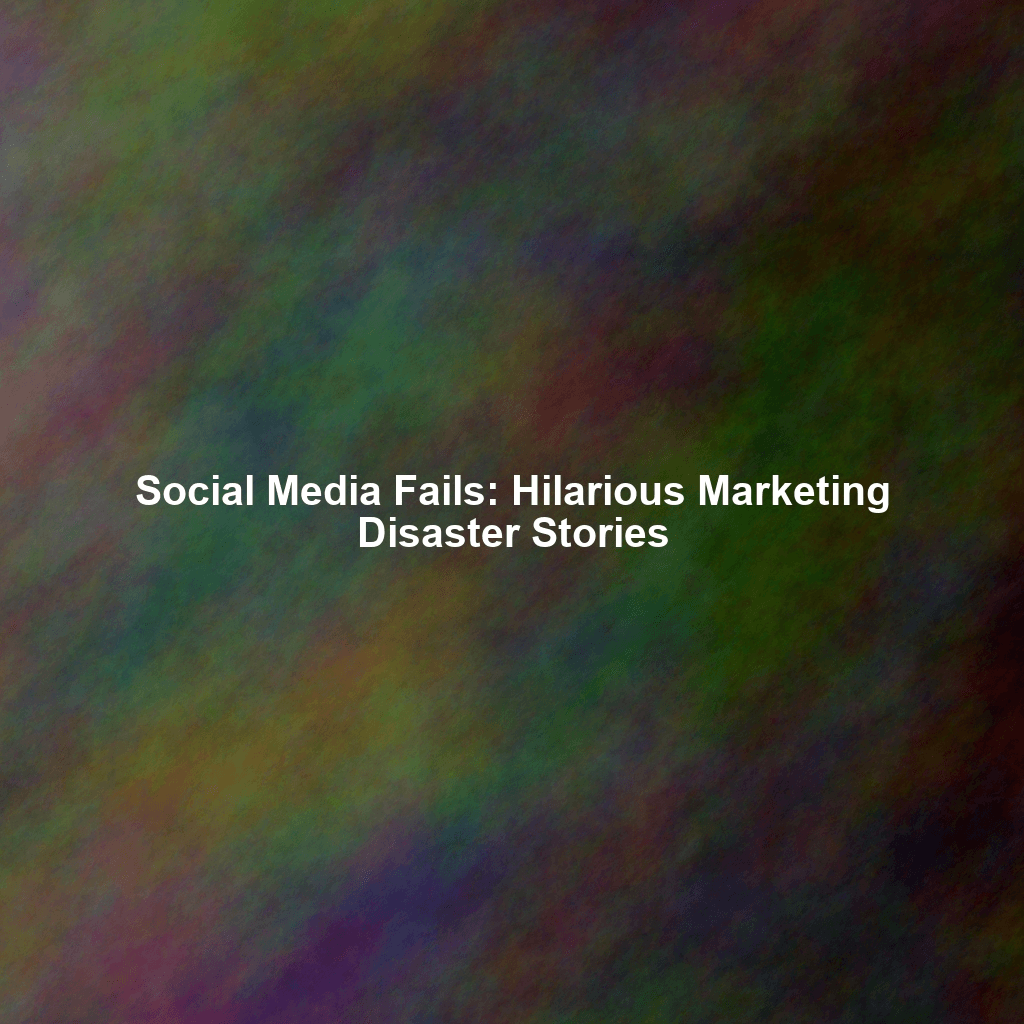The Perils of Hashtag Hijacking
Hashtags are supposed to unite, to categorize, to make your witty post discoverable. But they can also be weaponized against you. One of the classic examples involves the NYPD’s #MyNYPD campaign. The idea? To showcase the positive interactions between police and the community. The reality? A deluge of photos showing police brutality and misconduct. The hashtag became a symbol of everything the NYPD *didn’t* want to be associated with, resulting in a PR nightmare and some seriously embarrassing memes.
Another prime example is McDonald’s #McDStories. Meant to elicit heartwarming tales of happy customers, it quickly devolved into a platform for sharing horror stories about undercooked burgers, rude service, and questionable ingredients. The golden arches turned decidedly tarnished, and McDonald’s hastily retreated from the hashtag before it could do even more damage.
Lessons Learned: Hashtag Horror Stories
- Do your research: Before launching a hashtag campaign, Google it! See what else it’s being used for, and anticipate potential negative associations.
- Be prepared for negativity: Have a plan in place to address negative feedback and manage the conversation. Don’t just ignore it and hope it goes away.
- Monitor, monitor, monitor: Keep a close eye on the hashtag and respond quickly to any emerging issues.
Tone-Deaf Disasters: Reading the Room (or Not)
Timing is everything, especially on social media. Posting the wrong message at the wrong time can be disastrous. Remember when DiGiorno Pizza tweeted #WhyIStayed with a picture of pizza? Seem innocuous? The hashtag was actually being used to share stories of domestic abuse survivors explaining why they stayed in abusive relationships. DiGiorno quickly deleted the tweet and issued an apology, but the damage was done. The brand was seen as insensitive and out of touch.
Another memorable misstep came from Kenneth Cole. During the height of the Egyptian revolution, the fashion brand tweeted, “Millions are in uproar in Cairo. Rumor has it that they heard our new spring collection is now available online. #Cairo.” The tweet was widely criticized for being opportunistic and trivializing a serious political situation. The brand apologized, but the gaffe was cemented in social media infamy.
Avoiding Tone-Deaf Tweets
- Be aware of current events: Stay informed about what’s happening in the world and avoid posting anything that could be seen as insensitive or exploitative.
- Consider your audience: Think about how your message will be perceived by different groups of people.
- Have a crisis communication plan: Be prepared to respond quickly and effectively to any negative feedback.
- Use Common Sense!: If you think a tweet *might* be in poor taste, chances are it is. Get a second opinion before hitting send.
When Humor Falls Flat: The Art of (Not) Being Funny
Humor can be a powerful tool for connecting with audiences, but it’s also a risky one. What one person finds hilarious, another might find offensive. Skittles once launched a campaign asking users to tell them what Skittles tasted like. Seemed simple, right? The responses were… creative, to say the least. And many were deeply inappropriate. The campaign quickly spiraled out of control, forcing Skittles to shut it down. While some found the chaos amusing, it ultimately damaged the brand’s image and showed a lack of control over their own messaging.
The Pitfalls of Attempted Humor
- Know your brand voice: Stick to humor that aligns with your brand’s personality and values.
- Avoid controversial topics: Steer clear of potentially offensive subjects like politics, religion, or social issues.
- Test your humor: Before launching a campaign, get feedback from a diverse group of people to make sure your jokes are landing the way you intended.
- Don’t try too hard: Sometimes, the best humor is subtle and understated. Trying too hard to be funny can backfire.
The Importance of Authenticity (and Not Being a Robot)
In the age of bots and AI-generated content, authenticity is more important than ever. People can spot a fake a mile away, and they’re not afraid to call you out on it. Social media is about building relationships, not just broadcasting messages. Pretending to be something you’re not will ultimately damage your brand’s credibility.
A major lesson learned from countless fails is that genuine engagement is paramount. Social media users crave authentic interactions with brands. They want to know there are real people behind the accounts, ready to listen, respond, and even admit mistakes.
 Skip to content
Skip to content

